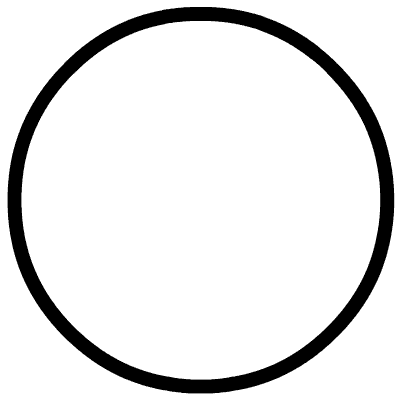点击上方“3D视觉工坊”,选择“星标”
干货第一时间送达

前言
CPU并行加速

CPU并行加速的本质就是通过硬件并发(hardware concurrency)的形式来实现。这种的操作方式是通过单个进程里多线程,从而实现共享地址空间,全局变量,指针,引用。但是这种方式相对而言更加传统,但是同时更加具有普适性。

其中操作是使用以pthread为代表的多线程并行加速
pthread
这是一个pthread的简单示例代码。
class helloFromObject{
public:
void operator()() const{
std::cout << "Hello, My Second thread!" << std::endl;
}
};
int main() {
std::cout << "Hello, Coconut Cat!" << std::endl;
std::thread bthread((helloFromObject()));
bthread.join();
return 0;
}
我们可以发现pthread这种多线程加速v-slam场景下都有着充分的应用。
OpenMP
openmp作为另一种CPU提速方式,在SLAM的特征提取中拥有比较良好的加速代码。当然thread对于openmp还是有一定的影响的,每个thread分配给omp的线程可能减小或者是在thread里面继续调用omp再开线程会带来更大的成本,导致omp单独执行时变慢。
#include
#include
#include
#include
#include
#include
#include "bench_source/harris.h"
// CHECK_FINAL_RESULT toggles the display of the input and output images
//#define CHECK_FINAL_RESULT
// Experiment : try to run multiples pipelines in parallel
//#define RUN_PARALLEL = true
// Check if image to matrix translation produces the correst output
//#define CHECK_LOADING_DATA
using namespace std;
static int minruns = 1;
int main(int argc, char ** argv)
{
int i, j, run;
int R, C, nruns;
double begin, end;
double init, finish;
double stime, avgt;
cv::Mat image, loaded_data;
cv::Scalar sc;
cv::Size size;
float *t_res;
float *t_data;
/* Might be unused depending on preprocessor macro definitions */
(void)t_res;
(void)t_data;
(void)loaded_data;
#ifdef VERSION_ALIGNED
float ** data;
float ** res;
printf("VERSION_ALIGNED\n");
int cache_line_size = get_cache_line_size();
#else
float * data;
float * res;
#endif
if ( argc != 3 )
{
printf("usage: harris\n");
return -1;
}
printf("Loading image ....\n");
image = cv::imread( argv[1], 1 );
printf("%s successfully loaded !\n\n", argv[1]);
if ( !image.data )
{
printf("No image data ! Are you sure %s is an image ?\n", argv[1]);
return -1;
}
// Convert image input to grayscale floating point
cv::cvtColor(image, image, cv::COLOR_BGR2GRAY);
size = image.size();
C = size.width;
R = size.height;
nruns = max(minruns, atoi(argv[2]));
printf("_________________________________________\n");
printf("Values settings :\n");
printf("Nruns : %i || %s [%i, %i]\n", nruns, argv[1], R, C);
printf("_________________________________________\n");
#ifdef VERSION_ALIGNED
res = alloc_array_lines(R, C, cache_line_size);
#else
res = (float *) calloc(R * C, sizeof(*res));
#endif
if(res == NULL)
{
printf("Error while allocating result table of size %ld B\n",
(sizeof(*res) * C * R ));
return -1;
}
#ifdef VERSION_ALIGNED
data = (float **) alloc_array_lines(R, C, cache_line_size);
for(i= 0; i < R;i++){
for(j = 0; j < C;j++){
sc = image.at(i, j) ;
data[i][j] = (float) sc.val[0]/255;
}
}
#else
data = (float *) malloc(R*C*sizeof(float));
for(i= 0; i < R;i++){
for(j = 0; j < C;j++){
sc = image.at(i, j) ;
data[i*C+j] = (float) sc.val[0]/255;
}
}
#endif
// Running tests
avgt = 0.0f;
/*
Do not use clock here we need elapsed "wall clock time", not total CPU time.
*/
init = omp_get_wtime();
#ifdef RUN_PARALLEL
#pragma omp parallel for shared(avgt)
#endif
for(run = 0; run <= nruns; run++)
{
begin = omp_get_wtime();
pipeline_harris(C, R, data, res);
end = omp_get_wtime();
stime = end - begin;
if(run !=0){
printf("Run %i : \t\t %f ms\n", run, (double) stime * 1000.0 );
#ifdef RUN_PARALLEL
#pragma omp atomic
#endif
avgt += stime;
}
}
finish = omp_get_wtime();
if(avgt == 0)
{
printf("Error : running didn't take time !");
return -1;
}
printf("Average time : %f ms\n", (double) (1000.0 * avgt / (nruns)));
printf("Total time : %f ms\n", (double) (finish - init) * 1000.0);
#ifdef RUN_PARALLEL
printf("Gain total times to run %i instances in parallel / serial time :\n ", nruns);
printf("\t %f\n",(double) (finish-init)/(avgt));
#endif
// Checking images using OpenCV
#ifdef VERSION_ALIGNED
t_res = (float *) malloc(sizeof(float)*R*C);
for(int i = 0; i < R; i++){
for(int j = 0; j < C; j++){
t_res[i * C + j] = res[i][j];
}
}
#else
t_res = res;
#endif
#ifdef CHECK_LOADING_DATA
#ifdef VERSION_ALIGNED
t_data = (float *) malloc(sizeof(float)*R*C);
for(int i = 0; i < R; i++){
for(int j = 0; j < C; j++){
t_data[i * C + j] = data[i][j];
}
}
loaded_data = cv::Mat(R,C,CV_32F, t_data);
#else
loaded_data = cv::Mat(R,C,CV_32F, data);
#endif
cv::namedWindow( "Check data", cv::WINDOW_NORMAL);
cv::imshow( "Check data", loaded_data);
cv::waitKey(0);
cv::destroyAllWindows();
loaded_data.release();
#ifdef VERSION_ALIGNED
free(t_data);
#endif
#endif /* CHECK_LOADING_DATA */
#ifdef CHECK_FINAL_RESULT
cv::Mat imres = cv::Mat(R, C, CV_32F, t_res);
cv::namedWindow( "Input", cv::WINDOW_NORMAL );
cv::imshow( "Input", image );
cv::namedWindow( "Output", cv::WINDOW_NORMAL );
cv::imshow( "Output", imres * 65535.0 );
cv::waitKey(0);
cv::destroyAllWindows();
imres.release();
free(t_res);
#endif /* CHECK_FINAL_RESULT */
#ifdef VERSION_ALIGNED
free(res);
#endif
image.release();
free(data);
return 0;
}
GPU并行加速

Nvidia 的CUDA工具箱中提高了免费的GPU加速的快速傅里叶变换(FFT)、基本线性代数子程序(BLAST)、图像与视频处理库(NPP)。用户只要把源代码中CPU版本的快速傅里叶变换、快速傅里叶变换和图像与视频处理库替换成相应的GPU版,即可得到性能加速。除了Nvidia提供的函数库以外,第三方的GPU函数库有:
-
CUDA数据并行基元库(cuDPP):
-
http://www.gpgpu.org/developer/cudpp/
-
CULA工具:由EM Photonics公司推出, CUDA GPU中的LAPACK:
-
http://www.culatools.com/
-
MAGMA:由Dongarra’s Group推出,CUDA GPU和多核CPU中的LAPACK:
http://icl.cs.utk.edu/magma/
-
-
GPULib:针对接口描述语言(IDL)以及矩阵实验室(MATLAB)的数学函数库:
http://www.txcorp.com/products/GPULib/
-
GPU VSIPL信号处理库:
http://gpu-vsipl.gtri.gatech.edu/
-
计算机视觉(CV)以及成像库:
http://openvidia.sourceforge.net/
-
OpenCurrent:规则网格系统中CUDA加速PDE(partial differential equation,偏微分方程)开源数据库解决方案:
http://code.google.com/p/opencurrent/
-
CUDA / GPU中的libSVM
-
Multisvm:利用CUDA的多等级SVM:
http://code.google.com/p/multisvm/
-
cuSVM:支持矢量分类与衰减的CUDA使用方法:
http://patternsonascreen.net/cuSVM.html
目前v-slam算法的主要是依赖CUDA开发加速的,为此,我们在GPU加速部分仅仅对CUDA进行举例介绍,等后面作者涉及到其他的加速后,再来扩充。我们在使用CPU并行计算的同时可以使用GPU加速,从而来耗费一定的GPU计算资源来提升视觉前端处理的能力。

我们先来看一下不带CUDA运算的部分代码:
TicToc t_o;
vectorerr;
if(hasPrediction)
{
cur_pts = predict_pts;
cv::calcOpticalFlowPyrLK(prev_img, cur_img, prev_pts, cur_pts, status, err, cv::Size(21, 21), 1,
cv::TermCriteria(cv::TermCriteria::COUNT+cv::TermCriteria::EPS, 30, 0.01), cv::OPTFLOW_USE_INITIAL_FLOW);
int succ_num = 0;
for (size_t i = 0; i < status.size(); i++)
{
if (status[i])
succ_num++;
}
if (succ_num < 10)
cv::calcOpticalFlowPyrLK(prev_img, cur_img, prev_pts, cur_pts, status, err, cv::Size(21, 21), 3);
}
else
cv::calcOpticalFlowPyrLK(prev_img, cur_img, prev_pts, cur_pts, status, err, cv::Size(21, 21), 3);
// reverse check
if(FLOW_BACK)
{
vectorreverse_status;
vectorreverse_pts = prev_pts;
cv::calcOpticalFlowPyrLK(cur_img, prev_img, cur_pts, reverse_pts, reverse_status, err, cv::Size(21, 21), 1,
cv::TermCriteria(cv::TermCriteria::COUNT+cv::TermCriteria::EPS, 30, 0.01), cv::OPTFLOW_USE_INITIAL_FLOW);
//cv::calcOpticalFlowPyrLK(cur_img, prev_img, cur_pts, reverse_pts, reverse_status, err, cv::Size(21, 21), 3);
for(size_t i = 0; i < status.size(); i++)
{
if(status[i] && reverse_status[i] && distance(prev_pts[i], reverse_pts[i]) <= 0.5)
{
status[i] = 1;
}
else
status[i] = 0;
}
}
下面是使用CUDA并行运算的代码:
TicToc t_og;
cv::cuda::GpuMat prev_gpu_img(prev_img);
cv::cuda::GpuMat cur_gpu_img(cur_img);
cv::cuda::GpuMat prev_gpu_pts(prev_pts);
cv::cuda::GpuMat cur_gpu_pts(cur_pts);
cv::cuda::GpuMat gpu_status;
if(hasPrediction)
{
cur_gpu_pts = cv::cuda::GpuMat(predict_pts);
cv::Ptrd_pyrLK_sparse = cv::cuda::SparsePyrLKOpticalFlow::create(
cv::Size(21, 21), 1, 30, true);
d_pyrLK_sparse->calc(prev_gpu_img, cur_gpu_img, prev_gpu_pts, cur_gpu_pts, gpu_status);
vectortmp_cur_pts(cur_gpu_pts.cols);
cur_gpu_pts.download(tmp_cur_pts);
cur_pts = tmp_cur_pts;
vectortmp_status(gpu_status.cols);
gpu_status.download(tmp_status);
status = tmp_status;
int succ_num = 0;
for (size_t i = 0; i < tmp_status.size(); i++)
{
if (tmp_status[i])
succ_num++;
}
if (succ_num < 10)
{
cv::Ptrd_pyrLK_sparse = cv::cuda::SparsePyrLKOpticalFlow::create(
cv::Size(21, 21), 3, 30, false);
d_pyrLK_sparse->calc(prev_gpu_img, cur_gpu_img, prev_gpu_pts, cur_gpu_pts, gpu_status);
vectortmp1_cur_pts(cur_gpu_pts.cols);
cur_gpu_pts.download(tmp1_cur_pts);
cur_pts = tmp1_cur_pts;
vectortmp1_status(gpu_status.cols);
gpu_status.download(tmp1_status);
status = tmp1_status;
}
我们可以看到该部分的代码仅仅是加入了cv::cuda::GpuMat这类基础的并行运算程序即可达到良好的提速效果,当然Mat对象仅仅存储在内存或者CPU缓存中。为了得到一个GPU能直接访问的opencv 矩阵你必须使用GPU对象 GpuMat 。它的工作方式类似于2维 Mat,唯一的限制是你不能直接引用GPU函数。(因为它们本质上是完全不同的代码,不能混合引用)
#include #include #include
官网GPU文档:
https://docs.opencv.org/2.4/modules/gpu/doc/gpu.html
注意:GPU并不能对图片的各种通道都能进行有效的处理。GPU只接受通道数为一或四的图片,且数值类型为char或float。GPU不接受double类型的图片数据,否则会有异常抛出。对于三通道的图片数据,要么在图片上再加一个通道变为四通道(但这样会比较消耗GPU内存不推荐);或者,将图片按通道划分成多个单通道图片依次处理。若对于某些函数,图片中元素的实际位置不影响处理,那么比较好的处理办法是将$\color{red}{图片直接转为单通道}$。
本文仅做学术分享,如有侵权,请联系删文。
下载1
在「3D视觉工坊」公众号后台回复:3D视觉,即可下载 3D视觉相关资料干货,涉及相机标定、三维重建、立体视觉、SLAM、深度学习、点云后处理、多视图几何等方向。
下载2
在「3D视觉工坊」公众号后台回复:3D视觉github资源汇总,即可下载包括结构光、标定源码、缺陷检测源码、深度估计与深度补全源码、点云处理相关源码、立体匹配源码、单目、双目3D检测、基于点云的3D检测、6D姿态估计源码汇总等。
下载3
在「3D视觉工坊」公众号后台回复:相机标定,即可下载独家相机标定学习课件与视频网址;后台回复:立体匹配,即可下载独家立体匹配学习课件与视频网址。
重磅!3DCVer-学术论文写作投稿 交流群已成立
扫码添加小助手微信,可申请加入3D视觉工坊-学术论文写作与投稿 微信交流群,旨在交流顶会、顶刊、SCI、EI等写作与投稿事宜。
同时也可申请加入我们的细分方向交流群,目前主要有3D视觉、CV&深度学习、SLAM、三维重建、点云后处理、自动驾驶、多传感器融合、CV入门、三维测量、VR/AR、3D人脸识别、医疗影像、缺陷检测、行人重识别、目标跟踪、视觉产品落地、视觉竞赛、车牌识别、硬件选型、学术交流、求职交流、ORB-SLAM系列源码交流、深度估计等微信群。
一定要备注:研究方向+学校/公司+昵称,例如:”3D视觉 + 上海交大 + 静静“。请按照格式备注,可快速被通过且邀请进群。原创投稿也请联系。

▲长按加微信群或投稿

▲长按关注公众号
3D视觉从入门到精通知识星球:针对3D视觉领域的视频课程(三维重建系列三维点云系列结构光系列、手眼标定、相机标定、orb-slam3知识点汇总、入门进阶学习路线、最新paper分享、疑问解答五个方面进行深耕,更有各类大厂的算法工程人员进行技术指导。与此同时,星球将联合知名企业发布3D视觉相关算法开发岗位以及项目对接信息,打造成集技术与就业为一体的铁杆粉丝聚集区,近2000星球成员为创造更好的AI世界共同进步,知识星球入口:
学习3D视觉核心技术,扫描查看介绍,3天内无条件退款

圈里有高质量教程资料、答疑解惑、助你高效解决问题
觉得有用,麻烦给个赞和在看~ 



